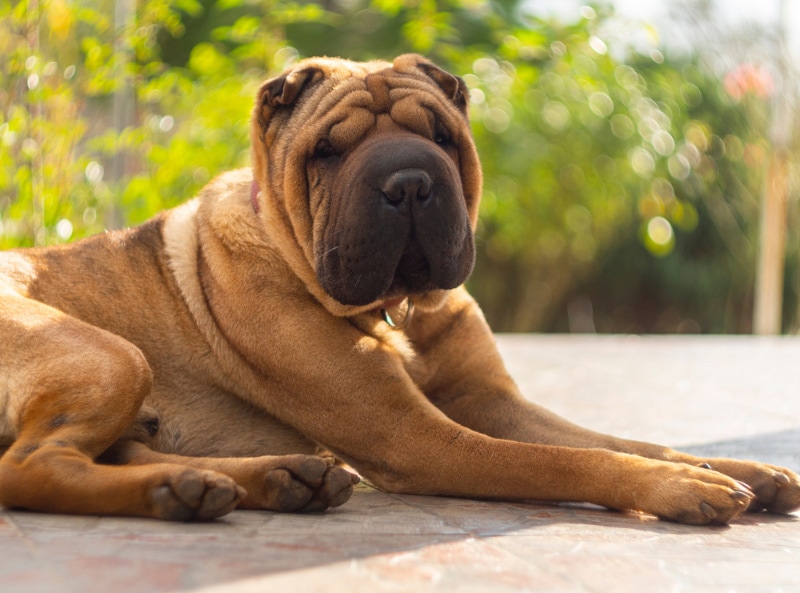
No dog breed on earth can compete with the Shar Pei when it comes to their unusual appearance. The Shar Pei stands out from the canine crowd, from their curly tail to wrinkled skin to floppy jowls. If you’re curious to learn more about this unique dog, you’ve come to the right place! Here are seven interesting Shar Pei facts that may surprise you.

The 7 Interesting Shar Pei Facts
1. Shar Pei Are One of the Oldest Dog Breeds
According to DNA studies1, Shar Pei are among the 14 oldest purebred dog breeds recognized by the AKC. Shar Pei may have existed in their native China as far back as 200 B.C., during the Han dynasty.
Ancient statues of dogs who look suspiciously like Shar Pei have been discovered in China, along with writings that mention wrinkled dogs. Not much is known about their early history, but Shar Pei are thought to have served as hunters and guard dogs for Chinese farmers and the working class.
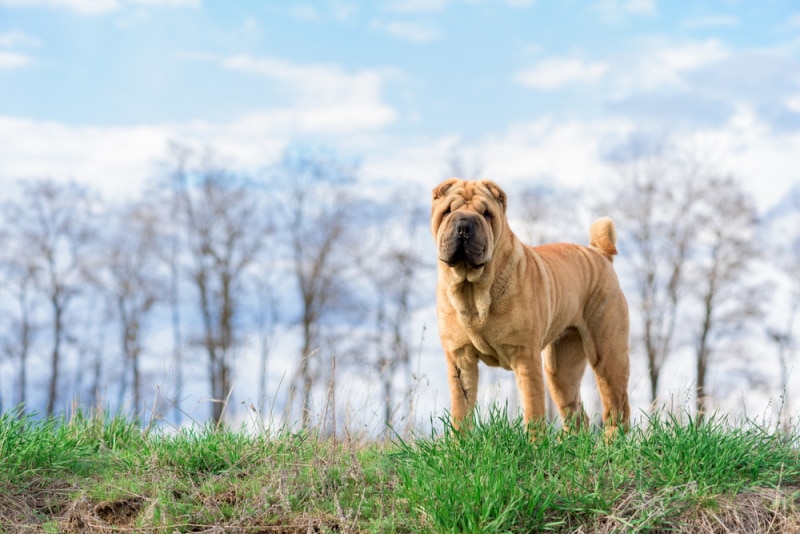
2. The Name Shar Pei Means “Sand Skin”
The Shar Pei has one of the most unique coat textures of any breed. The name of the breed comes from this characteristic hair. In Chinese, Shar Pei translates to “sand skin,” which is an apt description for a coat that is as harsh to the touch as sandpaper.
Technically, Shar-Pei coats come in two types: horse and brush. Brush coats are slightly softer than horse coats. However, Shar Pei fur can be quite irritating to human skin, even for those who don’t have dog allergies.
3. Shar Pei Have Blue Tongues
Most people associate a blue or blue-black tongue color with another breed, the Chow Chow. However, there are two breeds with naturally blue-black tongues, and the Shar Pei is one of them.
Like Shar Pei, the Chow Chow originated from China. Although they look nothing alike now, Chows and Shar Pei most likely share common genetic ancestry based on their Chinese roots and matching tongue color. Mixed-breed dogs with blue-black tongues could have Chow Chow or Shar Pei blood in their family tree.
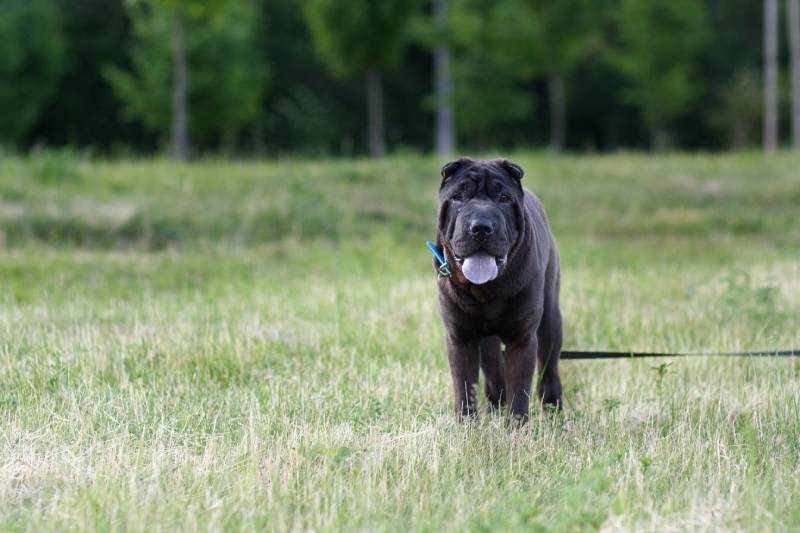
4. Shar Pei Were Once the Rarest Breed in the World
After World War II, the newly created People’s Republic of China actively discouraged dog ownership among the population. By heavily taxing dog ownership and other, more drastic measures, the government all but eliminated the Shar Pei in mainland China. Breeders in Hong Kong and Taiwan were able to save a few Shar Pei and preserve the breed from extinction. In the 1960s and 1970s, the Guinness Book of World Records named the Shar Pei the rarest breed in the world.
5. Shar Pei Were Saved by Good Press
In the 1970s, Life Magazine published a cover story on the Shar Pei and its status as a rare and endangered breed. The good press from the magazine followed an earlier publicity campaign by a Hong Kong breeder, who appealed to the global dog-loving community to help save the Shar Pei.
As is still the case today, increased visibility brought an explosion of popularity for the Shar Pei. In the United States, interest in and sales of Shar Pei boomed almost immediately after the breed was featured on the cover of Life Magazine.
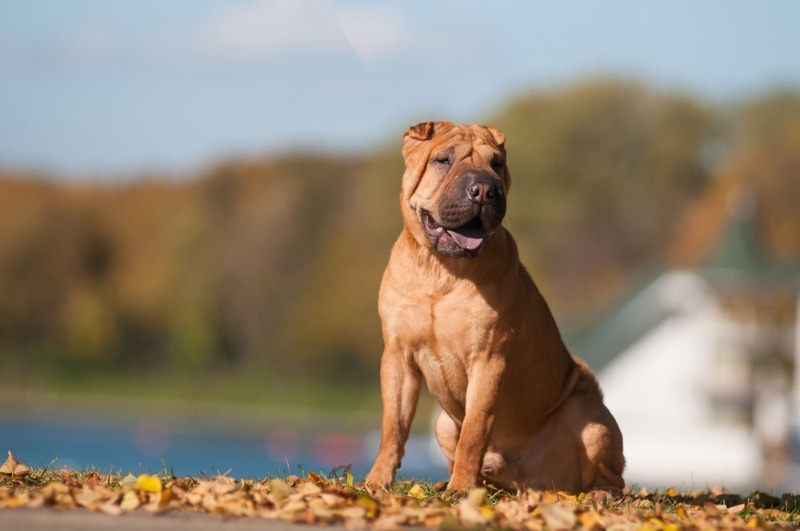
6. Shar Pei Are the 134th Breed Recognized by the American Kennel Club
Although Shar Pei dogs have lived in the United States since the mid-20th century, the AKC did not recognize the breed until the 1990s. With 200 recognized breeds in total, the Shar Pei still counts as one of the newer members of the AKC.
Based on AKC registrations, they are currently the 68th most popular purebred dog in the United States. Their popularity has remained fairly consistent over the past several years as well.
7. The Wrinkles Don’t Always Remain
The wrinkled skin of the Shar Pei is probably the breed’s most well-known characteristic. Even people who know little about dog breeds can frequently recognize a Shar Pei because of the wrinkles.
However, while Shar Pei puppies are almost always wrinkled, adults are another story. Some adult Shar Pei continue to sport loose, wrinkly skin throughout their lives. Others may lose the wrinkles across their body but retain them on their head. There’s no good way to predict which Shar Pei pup will keep the wrinkled appearance as they age.
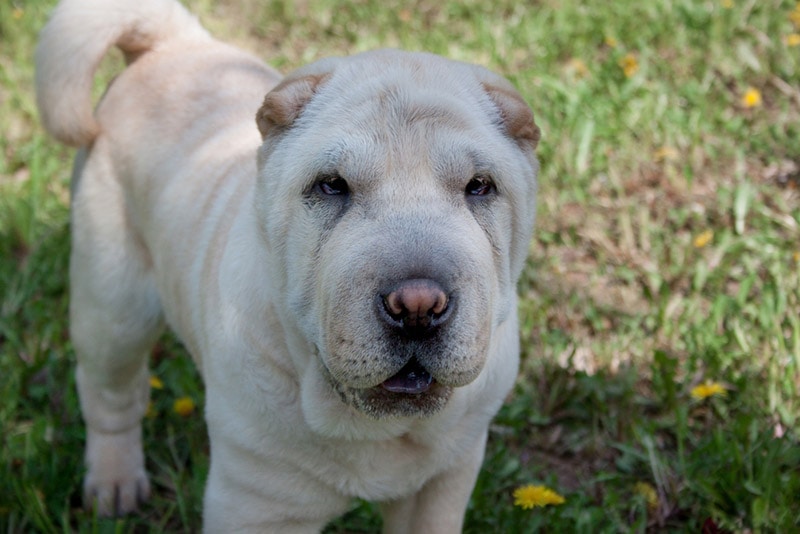

Do Shar Pei Make Good Pets?
Shar Pei can make good pets in the right living situation, but their personalities are as unique as their appearance. Bred to serve as guard dogs, the Shar Pei is independent, protective, and naturally suspicious. They love their families but are not especially outgoing.
Because they are wary of strangers and not very active or playful, Shar Pei don’t make the best companions for kids. They can get along with the family children okay with socialization but probably won’t enjoy meeting new ones. Shar Pei normally don’t like strange dogs and may chase small pets like cats.
Shar Pei are best suited to experienced dog owners because they can be challenging to train. Prone to stubbornness, the Shar Pei will resist harsh training and has a mind of their own. Because they are protective and can be dominant, a poorly trained and socialized Shar Pei can be problematic and a threat to strangers and other dogs.

Conclusion
If you want to add a Shar Pei to your family, research potential breeders carefully. Shar Pei are prone to several inherited medical conditions, and responsible breeders should screen for as many as possible before producing puppies. As we learned in this article, the Shar Pei is an interesting breed, but they are not suitable for every living situation. Don’t let the adorable wrinkles blind you to the challenges of living with a Shar Pei if you aren’t prepared or experienced.
Featured Image Credit: Alika Obraz, Shutterstock

